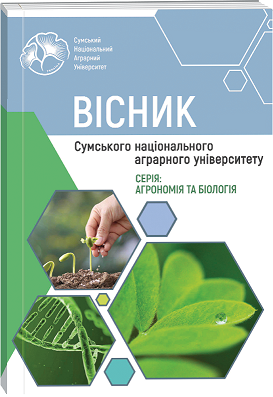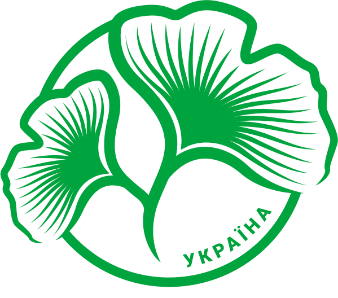GERMINATION OF PUMPKIN SEEDS UNDER CD STRESS
Abstract
Cadmium is a non essential element for plant growth, and its accumulation in plants can cause damage to a certain extent. The accumulation of heavy metals not only inhibits the growth and development of plants, but also threatens human health through the food chain. Therefore, the problem of heavy metal pollution cannot be ignored. Studies have shown that grafting can reduce the accumulation of cadmium in Pumpkin fruits, such as eggplants, providing new ideas for mitigating the impact of heavy metal pollution on agricultural products. Pumpkin (Cucurbita moschata (Duchesne ex Lam.) Duchesne ex Poir.) as an important vegetable crop, it has a well-developed root system and good affinity, and is often used as a grafting rootstock for melon crops. Seed germination is a crucial stage for evaluating plant cadmium tolerance. The evaluation of plant tolerance to heavy metals during germination is a widely recognized method internationally. Therefore, this study investigated the effects of cadmium stress on pumpkin seed germination and the tolerance of different pumpkin varieties to heavy metal cadmium under the same concentration (8mg/L-1 Cd2+) of heavy metal cadmium stress, in order to screen pumpkin resources that are tolerant to heavy metal cadmium stress and provide a basis for further screening of pumpkin rootstocks that are tolerant to heavy metal cadmium pollution. The research results indicate that cadmium has a significant impact on the germination status of some combinations of seeds, while the impact on other combinations is relatively small, such as: Hetou a2×041-1, Hetou a2×360-3, and Yanbian-2×041-1 have high relative germination rates, with Yanbian-3×041-1 having the highest relative germination potential, Yanbian-3×041-1 having the most prominent relative germination index, and Yanbian-3×Lingchuan c1 having the highest relative vitality index. Overall, 360-3×041-1 and Hetou a2×360-3 are at a relatively high level in terms of relative germination rate, relative germination index, and relative vitality index, while Yanbian-2×041-1 and Yanbian-3×041 are at a relatively high level. The three indicators of relative germination potential, relative germination index, and relative vitality index are all at a relatively high level, indicating that they are relatively less affected by cadmium. According to the analysis of membership functions, the average value of the membership function for combinations 360-3×041-1 is the highest, followed by Yanbian-3×041-1, Hetou a2×360-3, Yanbian-2×041-1, Yanbian-4×Lingchuan c1, Yanbian-3×Lingchuan c1, and Hetou a2×041-1. The average value of the membership function is above 0.70, indicating good growth status and good Cd tolerance. Therefore, seven pumpkin hybrid combinations with strong Cd tolerance were finally selected.
References
2. Chen Bihua, Guo Weili & Zhou Junguo (2017). Study on the Enrichment Characteristics of Heavy Metal Cadmium in Chinese Pumpkin Resources. Proceedings of the 2017 Academic Annual Meeting of the Pumpkin Research Branch of the Chinese Horticultural Society, 86–91.
3. Chen, Li (2017). Metabolomic response of mung bean seeds during germination under cadmium stress. Nanchang: Nanchang University
4. Dong, Lili (2023). Identification of cadmium tolerance in sorghum germplasm resources and transcriptome analysis under cadmium stress. Guizhou: Guizhou University
5. Gan, Tingting, Zhao, Nanjing & Yin, Gaofang (2021). The Status and Prevention Suggestions of Heavy Metal Pollution in Agricultural Land Soil in the Yangtze River Delta Region. China Engineering Science, 23 (1), 174–184.
6. Fasih, Ullah Haider, Cai, Liqun, Jeffrey A Coulter, Sardar, Alam Cheema, Jun Wu, Renzhi, Zhang, Ma, Wenjun & Muhammad, Farooq (2021). Cadmium toxicity in plants: Impacts and remediation strategies. European Journal of Medicinal Chemistry: Chimie Therapeutique, 211. doi: 10.1016/j.ecoenv.2020.111887
7. Han Lili, Zhang Liyun & Gao Caimei, etc. (2017). Analysis of Continuous Crop Obstacles in Vegetable Facility Cultivation. Friends of Farmers Getting Rich, (20): 68. doi: 10.3969/j.issn.1003-1650.2017.20.068
8. Han Lu, Wei Wei & Guanzi Qian, (2007). Cloning of TcCaM2 gene from the Zn/Cd hyperaccumulation plant Tlaspi caerulescens and analysis of heavy metal tolerance in yeast. Journal of Graduate School of Chinese Academy of Sciences, 24 (4), 465–472. doi: 10.3969/j.issn.1002-1175.2007.04.010
9. Lei Long, Cui Xiaoying & Zhuang Ping, (2021). Biomass disposal technology for remediation of heavy metal contaminated farmland using plant Solanum nigrum and accompanying mineral Sedum. Journal of Environmental Engineering, 15 (7): 2356–2367. doi: 10.12030/j.kjee. 202101052
10. Li Liupeng, Zhou Yan & Wang Yong (2014). Research on Soil Pollution in Vegetable Fields in Guizhou Province. Agricultural Development and Equipment, (7), 36–38.
11. Li Meifang, Zhang Ping & Li Qian, (2021). The effects of two iron carrier/phosphate solubilizing bacterial strains on the germination of ryegrass seeds and cadmium accumulation in seedlings under cadmium stress. Journal of Central South University of Forestry and Technology, 41 (9), 179–187.
12. Li Mengying, Hu Longxing & Xiang Zuoxiang. (2024). The effects of cadmium stress on seed germination, seedling growth, and physiology of southern amaranth. Grassland Journal, 32 (3), 754–762. doi: 10.11733/j.issn.1007-0435.2024.03.011
13. Liu Shasha, Li Bing & Feng Xiang, (2018). Experimental study on remediation of cadmium contaminated soil by three plant species. Chinese Agricultural Bulletin, 34 (22), 103–108.
14. Liu Wei, Shu Wensheng, & Lan Chongyu (2003). Viola baoshanensis – a new cadmium hyperaccumulation plant. Scientific Bulletin, 48(19), 2046–2049. doi: 10.3321/j.issn: 0023-074X.2003.19.009
15. Liu, Y. (2016). Effects of cadmium and copper ions stress on seed germinationfeatures of caragana korshinskii kom. Mod Agric Sci Technol, 20, 108&109.
16. Long Chunli, Song Lala & Hu Mingwen, (2021). The effects of cadmium stress on the germination and seedling resistance physiology of different varieties of chili seeds. Seed, 40 (5), 105–109.
17. Long Yumei, Liu Jie & Fu Xiaofeng, (2019). Comparison of remediation performance of four Cd hyperaccumulation/enrichment plants. Jiangsu Agricultural Science, 47 (8), 296–300. doi: 10.15889/j.issn.1002-1302.2019.08.067
18. Lou Wei. (2010). Selection of Radish, Carrot, and Eggplant Varieties with Low Accumulation of Cadmium and Lead, and Study on the Cadmium Accumulation Pattern of Radish. Hubei: Huazhong Agricultural University doi: 10.7666/d.D01404791.
19. Melis A. (2009). Solar energy conversion efficiencies in photosynthesis: Minimizing the chlorophyll antennae to maximize efficiency. Plant Science, 177(4), 272–280.
20. Meng Guiyuan, Tang Ting & Zhou Jing (2016). Analysis of Cadmium Tolerance during Seed Germination of Different Corn Varieties. Molecular Plant Breeding, 14 (11, 3166–3171
21. Peng Qingtang, Zou Yongzhou & Li Zengwu (2018). Analysis and comprehensive prevention and control of continuous cropping obstacles in facility vegetable cultivation. Agricultural Development and Equipment, (6), 168. DOI: 10.3969/j.issn.1673-9205.2018.06.129
22. Sun Yali, Liu Hongmei & Xu Qingguo. (2017). The effect of cadmium stress on seed germination characteristics of different rice varieties. China Rice Science, 31 (4), 425–431
23. Tang Guangmei, Jia Yujing & Guo Jiahang (2021). The Effects of Heavy Metal Pollution on Seed Germination and Seedling Growth of Peanuts and Soybeans. Journal of Yunnan Normal University (Natural Science Edition), 41 (1): 64–6.
24. Tian Xiaoxuan (2020). Effects of Copper and Cadmium Stress on Seed Germination and Seedling Growth Physiology of Cicada Flower. Harbin: Northeast Forestry University
25. Wang Dihua, Wang Gailing & Fan Cunhu (2021). The effects of cadmium stress on seed germination, physiological characteristics, and cadmium accumulation of Chinese cabbage. Chinese melon and vegetable, 34 (9), 80–83. doi: 10.3969/j.issn.1673-2871.2021.09.014
26. Wu Rangxiao, Zhu Zhu & Chang Yao (2020). The effect of cadmium stress on seed germination and seedling growth of six Asteraceae flowers. Molecular Plant Breeding, 18 (19), 6483–6490. doi: 10.13271/j.mpb.018.006483.
27. Yan H, Ning-Ning Y, Fen Z & Jun Z. (2019). Effect of cadmium, lead singleand composite pollution on seed germination characteristics of ryegrass. Value Eng,15, 154–157.
28. Yang Yun, Wang Chenjiao & Guo Jiahang (2022). The effect of cadmium stress on seed germination and seedling growth of Sedum erinaceus and Salvia miltiorrhiza. Journal of Yunnan Normal University (Natural Science Edition), 42 (1): 58–63. doi: 10.769/j.ynnu.ns-2022-011
29. Zhang Panpan, Wang Xiaolin & Guo Yaning (2020) Evaluation of Cadmium Tolerance during Seed Germination of 40 Different Millet Varieties. Northwest Agricultural Journal, 29 (12), 1803–1813.
30. Zhang Panpan, Wang Xiaolin & Guo Yaning (2020). Evaluation of Cadmium Tolerance during Seed Germination of 40 Different Millet Varieties. Northwest Agricultural Journal, 29 (12), 1803–1813.
31. Zhang Yangyang, Li Ximing & Gao Peng (202l) Comparison of tolerance and enrichment characteristics of six herbaceous plants under different concentrations of cadmium stress. Journal of Grassland Science, 29 (6), 1265–1276.
32. Zheng Wenjuan, Zhang Hua & Liu Tao (2019). Analysis of obstacles and development strategies for continuous cropping in facility vegetable cultivation. Southern Agricultural Machinery, 50(10), 74. doi: 10.3969/j.issn.1672-3872.2019.10.064
33. Zhu Hongxia, Zhao Hongyan, Chen Lili & Zhang Jiayang (2020). Response of Pb and Cd on seed germination and seedling physiological response of Portulaca oleracea under lead and cadmium stress. Journal of Southwest Forestry University, 40 (3), 76–81. doi: 10.11929/j.swfu.201905067
34. Zhu Huangrong, Zhou Lianghua & Yang Feng (2019). Comparison of the remediation effects of two types of Sedum on Cd/Zn contaminated soil. Journal of Ecological Environment, 28 (2), 403–410.

 ISSN
ISSN  ISSN
ISSN 



